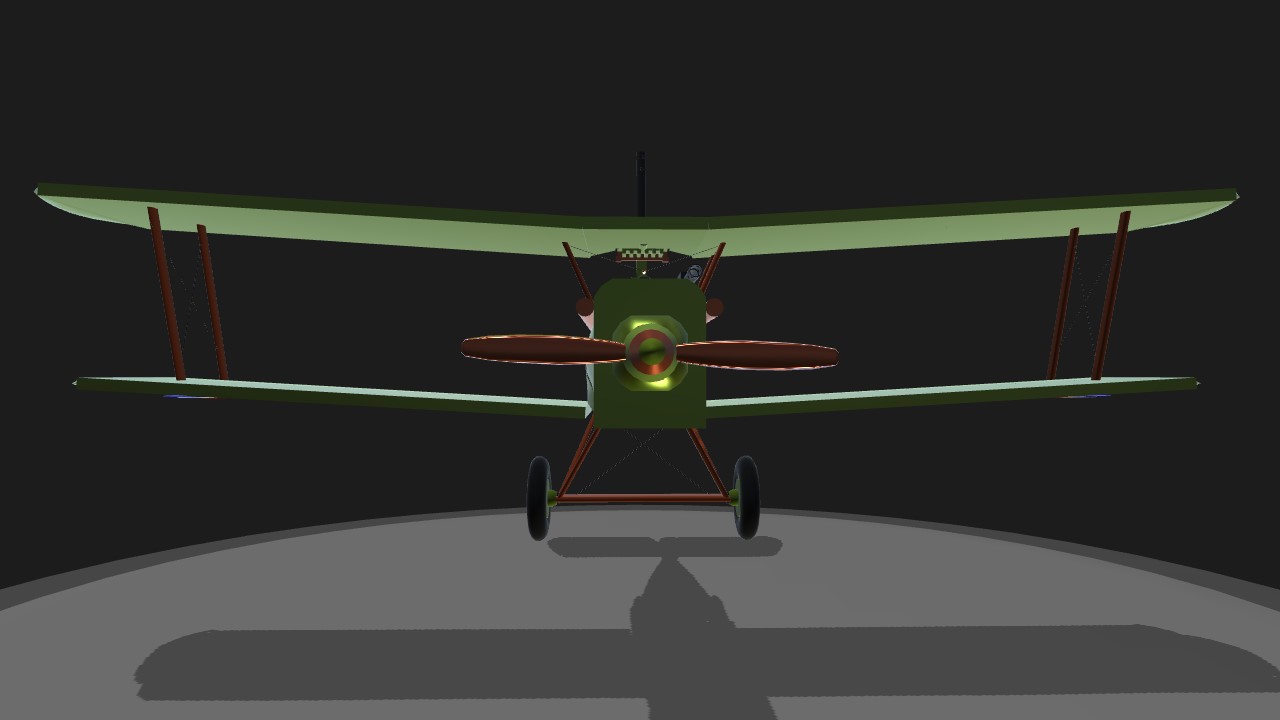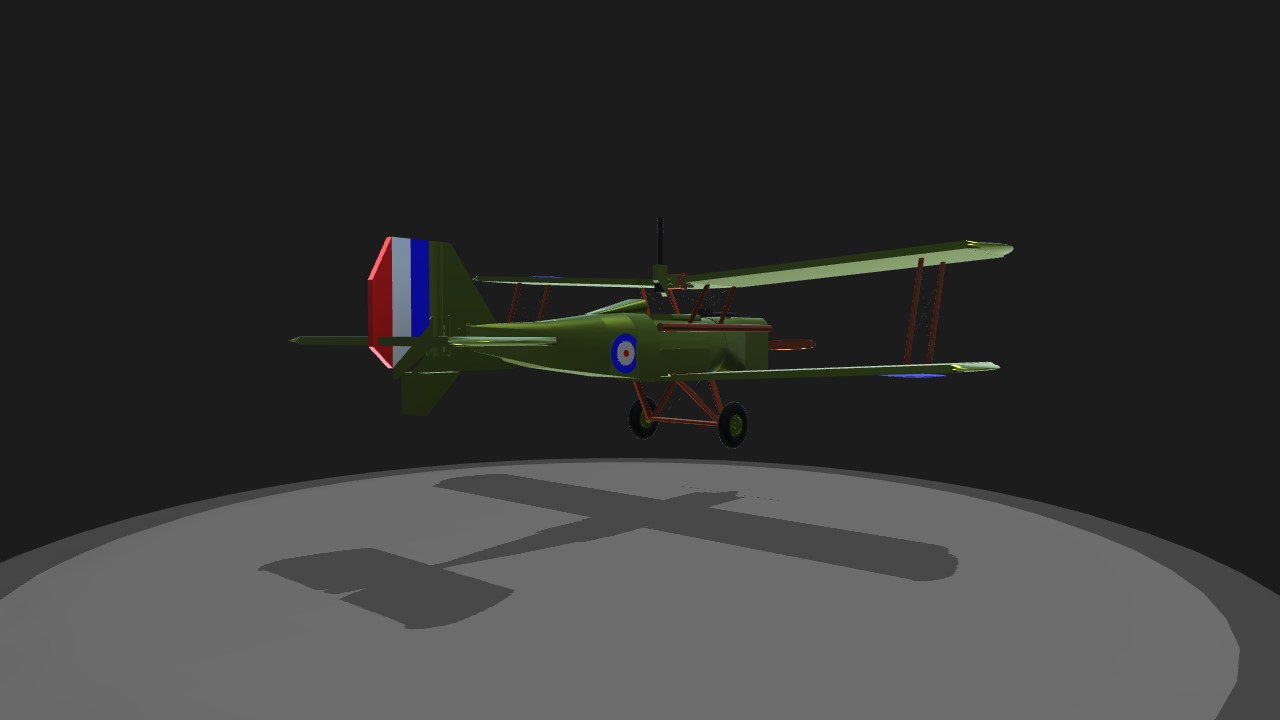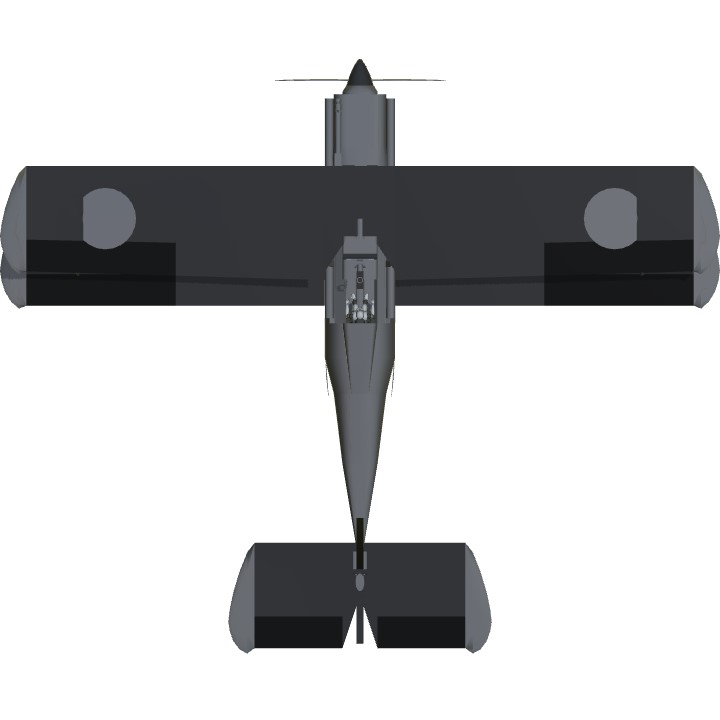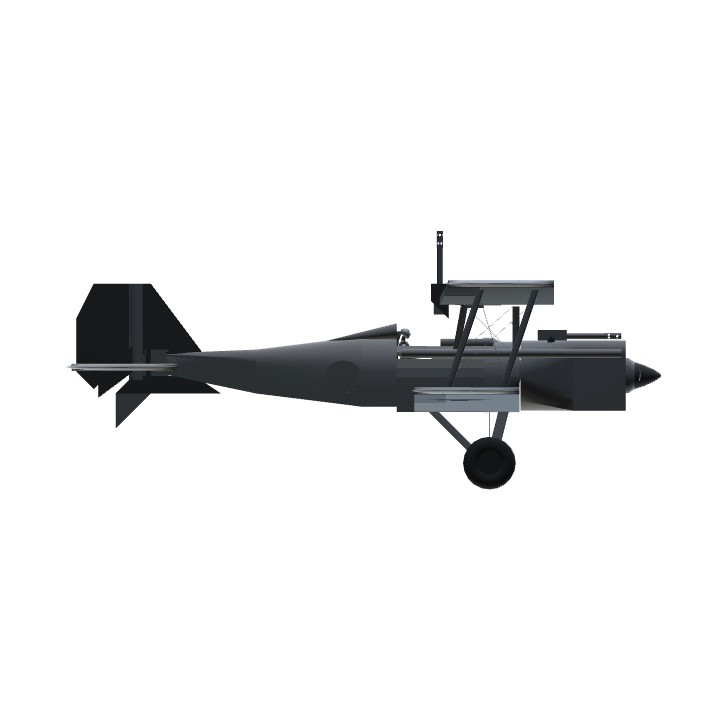As I struggled to find a solution to my previous model's difficulty with taking off, I stumbled upon MechWARRIOR57's WWI Challenge. I decided to enter my S.E.5a into the competition hoping to gain public interest in a plane type not seen on Simple Planes nearly as much as the more famous Fokker Dr.I and Sopwith Camel fighters. However, I had still not yet solved the take off problems my model faced. Trying to figure out where to put the cockpit, I came up with an idea: use the cockpit as a skid. After several test runs, the cockpit/skid turned out to be the answer to all of my problems. Take offs should be a breeze for even rookie pilots now. Landings however are a little tricky as the plane has a tendency to nose over.
Features further simplification, shortened length and wingspan, widened landing gear, edits and improvements in the aft section, a 900 HP 'Wolseley Viper' engine (previous was only 400 HP, making the plane very underpowered), and a two-bladed propeller turning clockwise from the pilot's POV, replacing the old four-bladed propeller.
This model is also much more stable than my last two sluggish versions, and even though turns aren't that tight, they're very consistent. The S.E.5a wasn't known much for tight turning anyway. Top speed in a level flight varies from 130-140mph, and can exceed 200mph in a dive. Don't be afraid to this plane to the limits; she's very forgiving! Enjoy! Oh and feel free to give me suggestions for improvement in the comments below.
Controls/Views:
AG1 - Fuselage-mounted Vickers MG
AG2 - Wing-mounted Lewis MG
VTOL Up - points Lewis gun forward
Normal controls for everything else
Use Camera 1 for cockpit view
The Royal Aircraft Factory S.E.5 was a British biplane fighter aircraft of the First World War.
The first examples reached the Western Front before the Sopwith Camel. Although it had a much better overall performance than the Camel, problems with its Hispano-Suiza engine, particularly the geared-output H-S 8B-powered early versions, meant that there was a chronic shortage of S.E.5s until well into 1918 and fewer squadrons were equipped with the S.E.5 than with the Sopwith fighter. Together with the Camel, the S.E.5 was instrumental in regaining allied air superiority in mid-1917 and maintaining it for the rest of the war, ensuring there was no repetition of "Bloody April" 1917 when losses in the Royal Flying Corps were much heavier than in the Luftstreitkräfte.
Only 77 original S.E.5 aircraft were built before production settled on the improved S.E.5a. The initial models of the S.E.5a differed from late production examples of the S.E.5 only in the type of engine installed – a geared 200 hp Hispano-Suiza 8b, often turning a large clockwise-rotation four-bladed propeller, replacing the 150 hp H.S. 8A model. In total 5,265 S.E.5s were built by six manufacturers: Austin Motors (1,650), Air Navigation and Engineering Company (560), Curtiss (1), Martinsyde (258), the Royal Aircraft Factory (200), Vickers (2,164) and Wolseley Motors Limited (431). A few were converted to two-seat trainers and there were plans for Curtiss to build 1,000 S.E.5s in the United States but only one was completed before the end of the war. At first, airframe construction outstripped the very limited supply of French-built Hispano-Suiza engines and squadrons earmarked to receive the new fighter had to soldier on with Airco DH 5s and Nieuport 24s until early 1918. The troublesome geared "-8b" model was prone to have serious gear reduction system problems, sometimes with the propeller (and even the entire gearbox on a very few occasions) separating from the engine and airframe in flight, a problem shared with the similarly-powered Sopwith Dolphin.
The introduction of the 200 hp (149 kW) Wolseley Viper, a high-compression, direct-drive version of the Hispano-Suiza 8a made under licence by Wolseley Motors Limited, solved the S.E.5a's engine problems and was adopted as the standard powerplant.
About 38 of the late-production Austin-built S.E.5as were assigned to the American Expeditionary Force, with the 25th Aero Squadron getting its aircraft (mostly armed only with the fuselage-mounted Vickers gun) at the very end of the war.
Specifications
General Characteristics
- Predecessor WW1 Challenge!
- Created On iOS
- Wingspan 33.6ft (10.3m)
- Length 27.4ft (8.4m)
- Height 12.1ft (3.7m)
- Empty Weight 6,453lbs (2,927kg)
- Loaded Weight 10,278lbs (4,662kg)
Performance
- Horse Power/Weight Ratio 0.087
- Wing Loading 28.1lbs/ft2 (137.1kg/m2)
- Wing Area 366.0ft2 (34.0m2)
- Drag Points 4214
Parts
- Number of Parts 271
- Control Surfaces 6
- Performance Cost 768







Love the look hope it does well in the contest
What do you not like? I'd love to know so I can make improvements as needed.
I suppose I could work on maneuverability. The thing turns like a whale...
There is a few things I like about this one, a few things I dont.
What do you think is wrong?
Can I help I think I know what is wrong